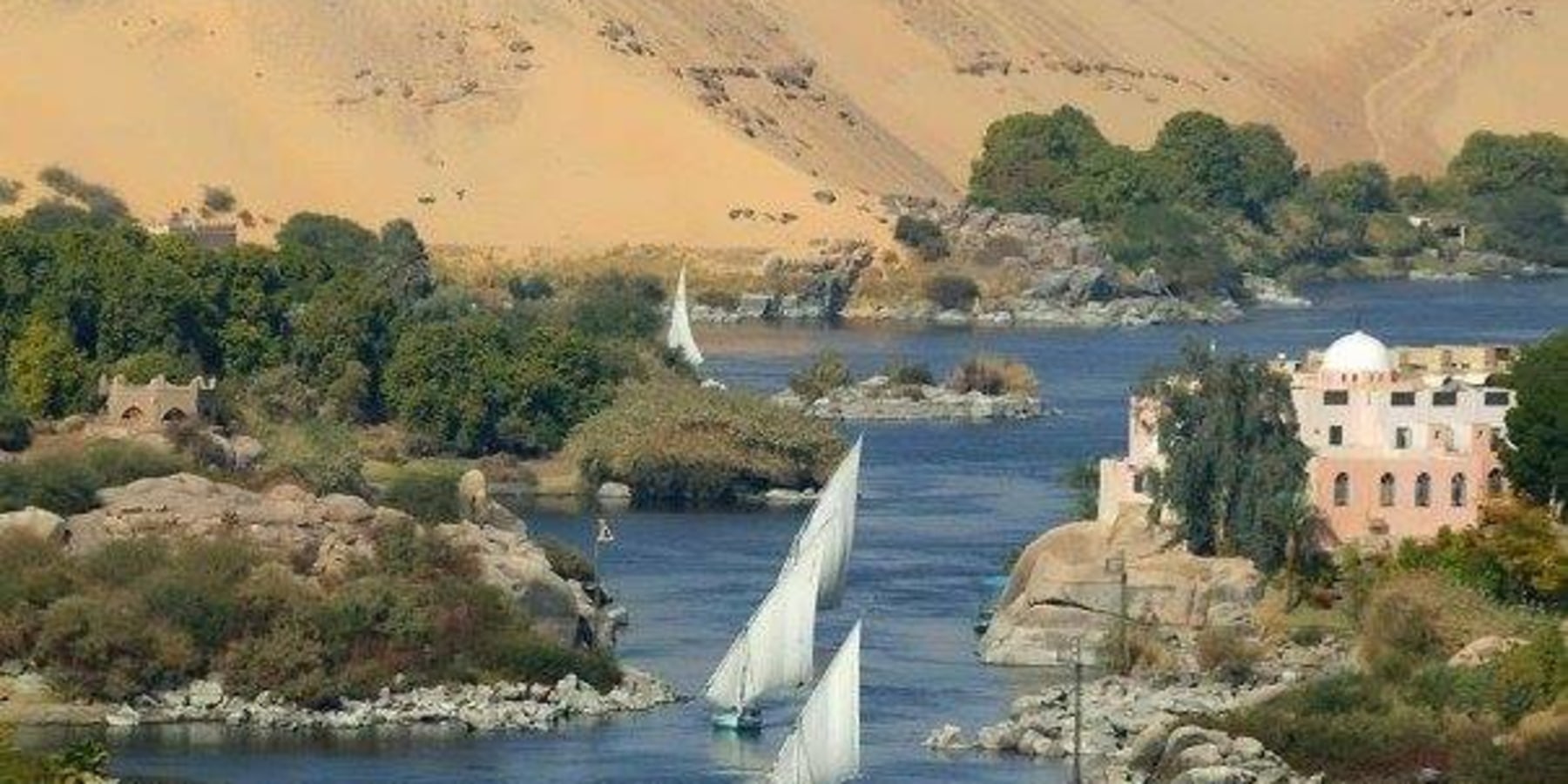
• The Greek historian Herodotus wrote that Egypt was a gift of the Nile, practically without the Nile, Egypt we know today would not have been existed.
• The Nile is the longest river in the world, flows 6680 km long. It is the only river that flows from south to north, passes 9 African countries before Egypt and ends at the Mediterranean.
• The Nile has two main springs: the Lake Victoria in Uganda from which the White Nile springs and the Lake of Tana on the plateaus of Ethiopia, from where the blue Nile flows. The two rivers meet together at Khartoum in Sudan, and from this point, the Nile flows towards Egypt.
• It is believed that the first boats on the Nile were simple boats built with papyrus plants to go fishing and make short trips.
• The ancient Egyptians also had wooden boats more elaborate, equipped with several rows of oars, a long sail and a rudder, the most complex ancient imbarcation was found in the funerary equipment of the King Cheops and is exposed in the museum of the solar boat in Giza. In the tombs, numerous models of simpler boats were found, today they are exposed in the Egyptian museum of Cairo.
• For the Egyptians, the Nile is the beginning and the end of existence: next to the river the Egyptians are born and have done the first bath. The Nile supports the life of the Egyptians ensuring abundant crops. When it is very hot or at the end of a day's work, the people here find comfort with a bath in the Nile.
• The Nile was also figured under the aspect of Hapy, a God usually depicted with the features of a pot-bellied man with a papyrus headdress .Hapy was celebrated every year with a popular festival when the river level increased. In some low reliefs, Hapy is often depicted in the act of tying papyrus and lotus plants together, which means that the Nile connects people to each other because the papyrus and the lotus are the emblems of the bass and Upper Egypt.
• The most beautiful Myth that concerns the Nile is the annual flood of the Nile which was due to the tears shed by the mother goddess and that of the sorrowful wife, Isis for the death of the good Osiris.
• In any case, the river was not only generous but also a source of many dangers such as crocodiles.
• Depending on the Nile, the kings also made efforts to clean it and to make canals so as to conserve water during times of starvation and also to make the bridges resistant to the flood of the Nile.
• In winter, the water level becomes low which calls for a way to lift the water. This led to the ancient Egyptians inventing the 'shaduf' that was used since pre-dynastic times and the mill was used during the Greek Roman era.
• The Nile also brought in the tax collector , a system established to mark the level of floods. The formula was very simple: the officials observed the level reached by the water on the island of elephantine where a Nilometre was made and every year, they marked the higher point.If the water came from 14 to 16 cubits, it meant abundant. If the water reached minus 8 cubits, it meant starvation.
So, we can say that the River Nile has organized a stable life for the ancient Egyptians because:
A. The river helped facilitate agricultural gains for the Egyptians.
B. Agricultural gains has led to the stability and strengthening of the bonds between people to collaborate in cultivating their lands.
C. Agriculture has also led to dividing the year into three seasons linked to the River Nile: the full season - "the summer, the agricultural season -" the winter", and the harvest season - the spring ".

